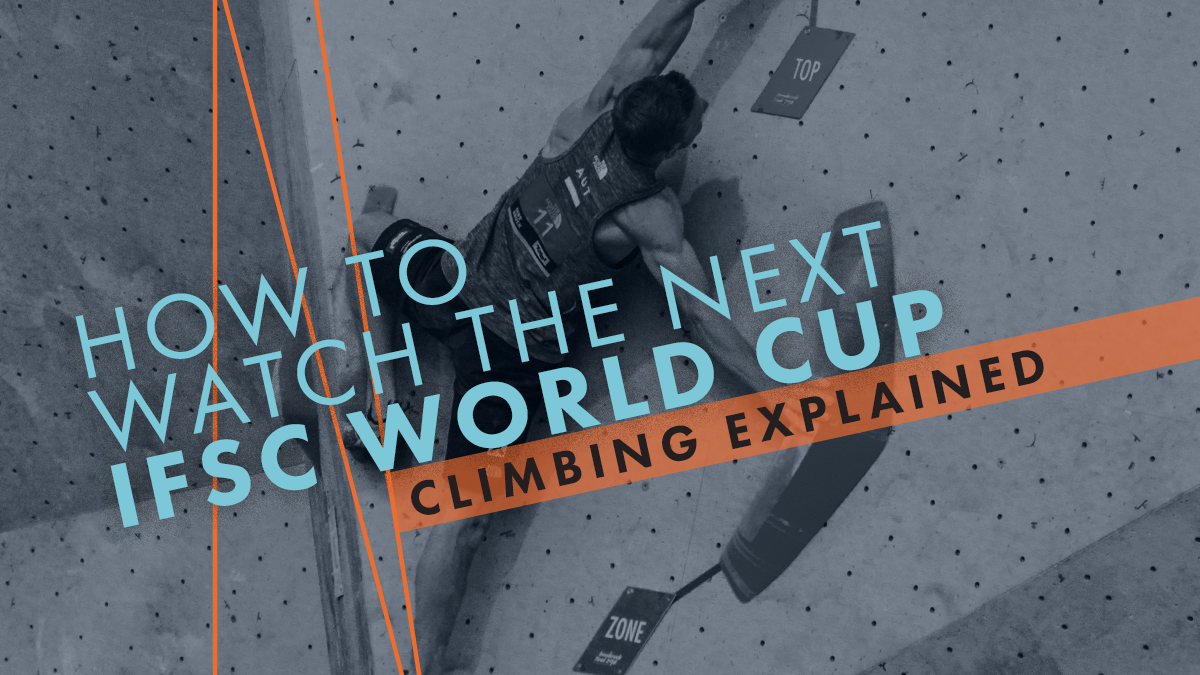Competitive climbing has been steadily growing in popularity, with more people than ever tuning in to watch not only the Olympics but also the IFSC World Cup circuit. Having more fans inherently means having more people new to the sport watching, and probably wondering how the sport of competitive climbing is scored. So, if you want to understand what the IFSC World Cup is and how athletes compete in it, you have come to the right place!
What Is the IFSC World Cup?
The International Federation of Sport Climbing (IFSC) organizes a series of competitions around the globe that allow top-tier athletes to compete in the three recognized disciplines of climbing: Bouldering, Lead, and Speed (this article will focus on bouldering and lead, as speed is straightforward – go fast!). Climbers must have qualified for the World Cup in preceding qualifying events to earn their chance to compete. World Cup climbers earn points toward their overall world rankings based on their performance at each World Cup. Depending on a climber’s goals for their season, they may compete in anywhere from one to all of the World Cups for the year. Iconically, Janja Garnbret became the first climber, male or female, to win every single event in a single IFSC Bouldering World Cup season in 2019. She secured gold medals at all six competitions that year, sweeping Meiringen, Moscow, Chongqing, Wujiang, Munich, and Vail. Hence, watching the IFSC World Cups can be so thrilling! Here’s an overview of what to look for, according to discipline.
Bouldering
What You’ll See: Climbers have four boulder problems, usually challenging in endurance, coordination, technical movement, and power, that the climber must “onsight”, meaning they do not get to see any other climber attempt the problem. The athletes have a brief viewing period during which they can inspect but not touch the boulders, and then they are ushered into isolation. Climbers are then brought out individually and given four minutes to attempt to send a given boulder problem.
The Goal: Climbers aim to top out, or “send,” the boulder problem within the allotted four minutes and in the fewest number of attempts. If a climber sends the problem on their first attempt, it is considered a “flash.”
Scoring: Boulder problems have “zones” and “tops”, and climbers are attempting to reach the zone and top in the least amount of attempts possible. A zone score in one attempt beats a zone score in two attempts, but a top score, no matter the number of attempts, beats a zone score every time.
What Makes It Fun: Watch for climbers having differing beta. The boulder problems are set with intended beta, but creative and talented World Cup climbers approach each situation differently, with strengths and weaknesses in various styles.
LEAD: Who Can Climb the Highest?
What You’ll See: Climbers will have one attempt and only six minutes to progress as far as possible on a vertical lead wall, which typically consists of four stylistically distinct sections of climbing. Climbers are on lead, which means they are clipping into quickdraws as they go. The format for lead is also onsight, meaning climbers do not get to watch other climbers compete.
The Goal: Lead climbing is rather simple; In a single attempt, reach the highest point on the climb compared to other competitors. Climbers cannot skip clips and must clip in correctly (no Z-clipping or back clips); otherwise, they will be called off the wall, and their attempt will end.
Scoring: Each individual hold is scored incrementally as the climb progresses. In order to have a hold count as a climber’s top-scoring hold, they must demonstrate control over the hold. Simply touching the hold is not enough to score.
What Makes It Fun: Lead climbing is a mix of endurance, commitment, and control. There is no opportunity to test out beta; climbers must be confident in their read of the climb, move with full commitment, and know where to shake out and rest. Plus, if a climber falls above the bolt, viewers are treated to a pretty spectacular whip!
2025 IFSC World Cup Schedule
Here’s when and where the action has happened or is happening this year:
April 18–20 – Keqiao, China (Boulder)
April 25–27 – Wujiang, China (Lead & Speed)
May 2–4 – Bali, Indonesia (Lead & Speed)
May 16–19 – Curitiba, Brazil (Boulder)
May 22–25 – Salt Lake City, USA (Boulder)
June 6–8 – Prague, Czech Republic (Boulder)
June 12–15 – Bern, Switzerland (Boulder)
July 11–13 – Chamonix, France (Lead & Speed)
July 18–19 – Madrid, Spain (Lead)
August 1–3 – Koper, Slovenia (Lead)
August 22–24 – Seoul, South Korea (World Championships)
Climbing is a unique sport that demands immense strength and athleticism, while also requiring problem-solving skills and mental fortitude. Now that you know how it works, you know how to watch! The 2025 World Cup season is shaping up to be one of the most exciting yet, so tune in and join the global climbing community!


